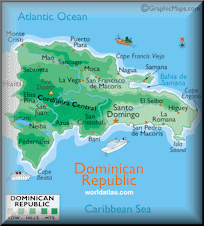-
-

Please Wait...
-
.com.do Dominican Domain Country Information - .com.do Dominican Republic Country Information
.com.do

Price and Requirements for .com.do Domains
Registration Pricing
- 2 Years 116.00 USD
Application Fee
Registration Time Frame
2 Weeks
Requirements
Yes Details Are Individual .com.do domain registrations allowed?
Yes Details Company or legal entities registrations allowed for .com.do?
No Details Are there requirements, documents, or information needed for .com.do?
Yes Details Are some .com.do domain names restricted?
No Details Does .com.do domain have a special use?
No Details Other information I need to know about .com.do?
No Details Are there any additional fees for .com.do?
No Details Do I need a trademark/brand name to register .com.do?
No Details WHOIS Privacy service available?
![]() Trustee / Proxy service offered? Fees?
No
Details
Trustee / Proxy service offered? Fees?
No
Details
.com.do Dominican Republic Country Information
The Dominican Republic is a nation on the island of La Hispaniola, part of the Greater Antilles archipelago in the Caribbean region. The western third of the island is occupied by the nation of Haiti, making Hispaniola one of two Caribbean islands that are shared by two countries. Both by area and population, the Dominican Republic is the second largest Caribbean nation (after Cuba), with 48,442 square kilometres (18,704 sq mi) and an estimated 10 million people.
Taínos inhabited what is now the Dominican Republic since the 7th century. Christopher Columbus landed on it in 1492, and it became the site of the first permanent European settlement in the Americas, namely Santo Domingo, the country's capital and Spain's first capital in the New World. Santo Domingo can boast of some of the firsts in the Americas, including the one of the oldest universities (the oldest being Colegio de Santa Cruz de Tlatelolco in Mexico, the first cathedral, and castle, the latter two in the Ciudad Colonial area, a UNESCO World Heritage Site.
After three centuries of Spanish rule, with French and Haitian interludes, the country became independent in 1821 under the rule of a former colonial judge who maintained the system of slavery and limited rights for the mostly mulatto and black population. The ruler, José Núñez de Cáceres, intended that the Dominican Republic be part of the nation of Gran Colombia, but he was quickly removed by the Haitian government and "Dominican" slave revolts. Victorious in the Dominican War of Independence in 1844, Dominicans experienced mostly internal strife, and also a brief return to Spanish rule, over the next 72 years. The United States occupation of 1916–1924, and a subsequent, calm and prosperous six-year period under HoracioVásquezLajara, were followed by the dictatorship of Rafael Leonidas Trujillo Molina until 1961. The civil war of 1965, the country's last, was ended by a U.S.-led intervention, and was followed by the authoritarian rule of JoaquínBalaguer, 1966–1978. Since then, the Dominican Republic has moved toward representative democracy, and has been led by LeonelFernández for most of the time after 1996.
The Dominican Republic has the second largest economy in the Caribbean and Central American region. Though long known for sugar production, the economy is now dominated by services. The country's economic progress is exemplified by its advanced telecommunication system. Nevertheless, unemployment, government corruption, and inconsistent electric service remain major Dominican problems. The country also has "marked income inequality".
International migration affects the Dominican Republic greatly, as it receives and sends large flows of migrants. Haitian immigration and the integration of Dominicans of Haitian descent are major issues; the total population of Haitian origin is estimated at 800,000. A large Dominican diaspora exists, most of it in the United States, where it numbers 1.3 million. They aid national development as they send billions of dollars to their families, accounting for one-tenth of the Dominican GDP.
The Dominican Republic has become the Caribbean's largest tourist destination; the country's year-round golf courses are among the top attractions. In this mountainous land is located the Caribbean's highest mountain, Pico Duarte, as is Lake Enriquillo, the Caribbean's largest lake and lowest elevation. Quisqueya, as Dominicans often call their country, has an average temperature of 26 °C (78.8 °F) and great biological diversity.
.com.do Dominican Republic Domain Name - Country Information
| Country Domain | Dominican Republic Domain Name .com.do |
|---|---|
| Country Information | Dominican Republic Domain Country Information .com.do |
| TLD Bulk & Advanced Search | Dominican Republic Bulk Domain Registration .com.do |
| WhoIs Server | .com.do Whois Server Information |
| Domain Renewals | Renewal Dominican Domain .com.do |
| Domain Transfer | Transfer Domain .com.do |
| Domain Hosting | .com.do Dominican Republic Web Hosting |
| SSL Certificates | SSL Certificates |
| Email Services | .com.do Dominican Republic Email Services |
| Domain FAQ | .com.do Domain Registration FAQ |
Dominican Republic Country Information Search Terms
Dominican Domain Country Information Dominican Domain Registrar Dominican World Wide Domain Registration Dominican Country Code Top Level Domain .com.do Domain Information Dominican Country Information Dominican Republic Country Information












